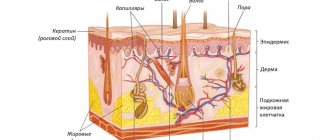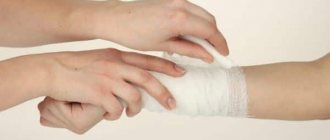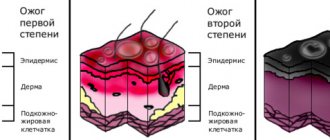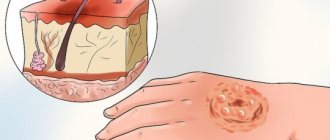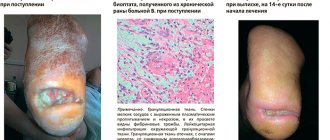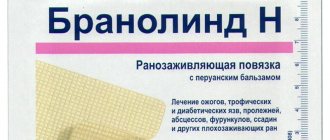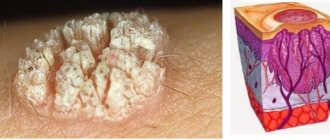July 20, 2021
Burns are one of the most common types of injuries in children and adults. Almost everyone has experienced a burn at some point in their life, particularly a thermal, chemical or solar burn.
Burns are one of the most common types of injuries in children and adults. Almost everyone has experienced a burn at some point in their life, such as a thermal, chemical or solar burn. Often minor burns can be treated with home remedies, but in other cases immediate medical attention is required.
In Russia, about 300 thousand cases of burn injury are registered annually (among those who sought medical help). Physical suffering, long-term disability, possible disability and mortality make this type of traumatic pathology the most relevant. With timely, reasonable, competent provision of first aid, it is possible not only to relieve the patient of pain, but also to prevent the development of complications, to create conditions for subsequent effective treatment and a speedy recovery.
There are several types of burns, including thermal, chemical, and even electrical and radiation. Thermal burns are the most common and account for more than 90% of all types. These are burns from flame, hot steam, hot or burning liquid, boiling water, burns from contact with hot objects, sunburn. The severity of burns is divided depending on the depth of skin damage.
With a 1st degree burn, only the upper layers of the skin are affected. Severe redness and swelling of the skin develop, and pain and a burning sensation are noted in the burned area. Symptoms subside within two days, and after a week complete recovery occurs.
With a 2nd degree burn, the top layer of skin completely dies and peels off, and in its place bubbles filled with a clear liquid form. If the course of the disease is not complicated by wound infection, healing occurs in 10-12 days.
With 3rd degree burns, the skin is affected almost to its entire depth. In this case, massive blisters with a thick shell are formed, filled with bloody contents, tense and very painful.
With a 4th degree burn, the most serious, there is complete death of all layers of the skin, even the deepest ones, including subcutaneous fat, as well as underlying tissues - muscles, tendons, bones. The above burns can affect limited (local) or large areas of the skin.
Effective and safe remedies for household and sunburn.
June 9, 2022
10122
4.9
2
Content
- Panthenol spray
- Bepanten Plus
- Olazol
- Radevit
- Sea buckthorn oil
- What to do in case of a burn?
- Burn: when do you need medical help?
Each of us has suffered a burn at least once in our lives. You could accidentally spill boiling water on yourself, touch a just-boiled kettle, unsuccessfully light a match, or touch your neck with a curling iron. Well, there’s no need to talk about sunburn - everyone got sunburned in the summer. Therefore, we suggest choosing a cream, ointment or spray for burns for your home first aid kit - you never know, it might come in handy. Here's our list of the best burn remedies that will reduce pain and relieve inflammation quickly.
Panthenol spray
This burn remedy is sold in a can - a gentle airy foam is sprayed directly onto the affected area. The great advantage of Panthenol is that it is used not only for household and sunburns, but also for scratches, abrasions, and the treatment of postoperative wounds. The active substance in the burn spray is dexpanthenol, which synthesizes special biologically active substances in the skin that help injuries heal faster and relieve inflammation.
Panthenol has a very convenient method of application, which does not require sponges, spatulas or unnecessary hand touching of damaged skin.
Panthenol spray
Bausch Health, Canada
A tissue regeneration stimulator that is used for: Various injuries to the skin and mucous membranes, including abrasions, burns, aseptic postoperative wounds, skin grafts, bullous and blistering dermatitis.
from 158
5.0 1 review
205
- Like
- Write a review
Skin reactions during radiotherapy
Skin changes are common and common during radiation therapy. Each patient responds to treatment differently.
The type of skin reaction that occurs depends on:
- the part of the body that is affected by the therapy;
- type and dose of radiation received.
Tell your doctor or nurse if you smoke and if you have:
- high blood pressure;
- diabetes;
- any connective tissue disease such as rheumatoid arthritis or dermatomyositis (a disease whose symptoms include skin rash and muscle weakness);
- previously detected skin cancer in the irradiated area.
These conditions may affect wound healing and the degree of response to radiotherapy.
Types of skin reactions during radiotherapy
During radiotherapy, the area of skin exposed to radiation may turn pink or tan. As therapy continues, your skin may become bright red or dark brown and may develop swelling. Additionally, your skin may become dry and you may feel tight, itchy, or flaky.
Some people may develop a rash or blisters where they receive treatment. These blisters may rupture or peel off. If skin reactions develop, they will most likely become most intense 2 weeks after the last therapy session. After completing radiotherapy, it may take several weeks for your skin to improve.
During therapy, you will be assessed weekly by your treatment team. They will examine your skin and make new skin care recommendations if necessary.
to come back to the beginning
Bepanten Plus
The active component of this burn cream is also dexpanthenol, but it also contains an antimicrobial substance. All this together helps to effectively treat sun and thermal burns, as well as prevent infection from entering the wound. "Bepanten" is often prescribed to nursing women for cracked nipples.
A minor disadvantage of this burn cream is that it has to be applied by hand or with a cotton swab, but this in no way affects the effectiveness.
Bepanten Plus
F. Hoffmann-La Roche, France
Prevention and treatment of dry skin when the integrity of its integument is violated;
— care for the mammary glands during breastfeeding (treatment of dry nipples and painful cracks); — treatment and care of the baby’s skin (diaper rash, diaper dermatitis); - activation of the skin healing process for minor injuries, minor burns, abrasions, skin irritations, chronic ulcers, bedsores, cracks and skin grafts. from 156
4.0 1 review
504
- Like
- Write a review
Prevention measures
Preventing burns involves careful handling of chemicals, household electrical and heating appliances. If we are talking about a child, he needs to be protected from danger - potentially unsafe objects and liquids should be kept away. If an injury occurs, you must immediately provide assistance and, if necessary, call a doctor.
Prevention of complications is careful adherence to the doctor’s recommendations during the treatment process, timely wound care, and the use of sterile materials. It is better to use specialized ointment dressings that accelerate healing and do not stick to the wound surface. You should also limit mechanical and physical irritation of the injured area, maintain hygiene, establish a drinking regime and eat a balanced diet, and the body will do the rest itself.
Olazol
“Olazol” is a multi-component spray for burns with a whole complex of active substances: cell regeneration stimulator (sea buckthorn oil), pain reliever (anesthesin), antibiotic (chloramphenicol). “Olazol”, thanks to this composition, is suitable for the treatment of complex burns and wounds: infected burns and non-healing wounds, trophic ulcers, microbial eczema and other wounds with bacterial infections. The advantage of the drug is that it contains an anesthetic for local anesthesia - this allows you not to take such drugs orally.
Among the disadvantages of this remedy for burns are individual intolerance and unwanted reactions when used after sunburn. The fact is that Olazol contains an antibiotic that can cause allergies.
Olazol
AltaiVitamins, Russia
Olazol is a remedy for the treatment of wounds and ulcerative lesions.
The combined drug has an anesthetic, antibacterial (shows activity against many gram-positive and gram-negative bacteria, pus-causing microbes, Haemophilus influenzae bacteria, Brucella, rickettsia, chlamydia, spirochetes) and anti-inflammatory effect, reduces exudation, promotes tissue regeneration and accelerates the process of epithelization of wounds. Used for burns. from 175
5.0 1 review
579
- Like
- Write a review
Iruksol
The ointment is intended for the treatment of wounds of various origins, including I-III degree burns. Its manufacturer is Smith Nephew (Germany). The main active ingredients are chloramphenicol and clostridiopeptidase.
Iruksol ointment
The drug affects the affected area in several directions at once:
- cleanses the burn of contaminants;
- resolves dead cells, tissue, pus and scabs;
- destroys bacteria and pathogenic microorganisms;
- by stimulating the granulation process, it promotes faster healing of wounds.
According to doctors and patients, Iruksol is a very good ointment after burns, since it has a complex effect, but at the same time selectively (does not damage living tissue). The drug stimulates blood microcirculation without causing bleeding. It accelerates the regeneration of the skin and has the ability to resolve scars.
Radevit
This ointment contains components that enhance the regeneration of skin damaged after a burn (vitamins A, E and D). "Radevit" accelerates the healing of thermal burns and uninfected wounds, stimulating tissue metabolism. The ointment reduces skin itching in dermatoses.
In addition, this burn remedy perfectly moisturizes the delicate skin that grows on wounds. It does not crack and there is no risk of re-infection.
"Radevit" has practically no contraindications, so this ointment for burns can be used in children under one year old, pregnant and lactating.
Radevit
Retinoids, Russia
Radevit is a drug that improves trophism and tissue regeneration, for external use.
It has a dermatoprotective, antipruritic, anti-inflammatory effect. from 280
5.0 10 reviews
1408
- Like
- Write a review
Stages of treatment
The choice of therapy depends on the presence of concomitant diseases and the nature of the skin lesion. The standard approach involves solving specific problems at each stage of wound healing:
- Rejection of necrotic tissue. Treatment is carried out with an antiseptic and complex anti-inflammatory agents.
- Granulation. The blisters with liquid open, the inflammation gradually subsides, but the wound is open. At this stage, treatment with an antiseptic continues, dressings with wound-healing compounds are indicated.
- Epithelization. There is almost no pain, the wound is covered with fresh skin. Compositions are used that improve metabolism and stimulate regeneration.
It is not recommended to wet the wound until it has completely healed. Dressings are carried out according to schedule. The doctor monitors the situation in time to notice the worsening of the situation. Skin restoration lasts about 2 weeks.
Sea buckthorn oil
Sea buckthorn oil is an excellent natural, inexpensive remedy for burns. Sea buckthorn oil is practically harmless and has no contraindications (except perhaps allergic reactions or individual intolerance). Sea buckthorn oil for burns contains biologically active substances that restore skin cells and heal wounds; the oil also acts as an antiseptic. Sea buckthorn oil is used undiluted to treat burns.
Sea buckthorn oil is universal and is used for many problems (bedsores, trophic ulcers, thermal burns, vitamin deficiencies, etc.).
It is not very convenient, of course, to apply the oil, because it is in liquid form, but this is compensated by its 100% naturalness and effectiveness in treating burns and wounds.
Sea buckthorn oil
OJSC "Nizhpharm", Russia
Sea buckthorn oil is a herbal product, a source of vitamins A, E, K, stimulates reparative processes in the skin and mucous membranes, accelerates their epithelization, inhibits the activity of gastric proteases, has anti-inflammatory, restorative, antioxidant and cytoprotective effects.
Due to the presence of fat-soluble bioantioxidants, it reduces free radical processes and protects cell membranes from damage; lowers cholesterol and lipid levels in the blood. Of all the known vegetable oils, only sea buckthorn contains vitamin A in the most active form in the form of beta-carotenoids and in maximum quantities. In the last decade, scientists around the world have unanimously recognized the outstanding healing properties of this provitamin. from 24
4.0 1 review
913
- Like
- Write a review
Read also: Top 5 best sorbents for poisoning Rating of the most effective and safe sorbents that help with poisoning and hangover syndrome.
Local treatment of burn victims on an outpatient basis
Burns are one of the most common types of injuries. In Russia, more than 400 thousand patients with thermal burns are registered annually. Moreover, only 30% of them require hospitalization; the remaining patients are treated in the clinic. In addition, most patients with the consequences of thermal injury after discharge from the hospital also continue treatment and rehabilitation on an outpatient basis. Therefore, effective treatment of burn victims depends not only on the combustiologist working in the burn center. In many ways, qualified medical care for burns at the outpatient stage determines their further course, the possibility of developing complications and the outcome of the injury.
Local treatment of burns is carried out at all stages of evacuation and treatment of burned victims in accordance with the established volume of medical care for each stage.
First aid to burn victims should be provided immediately, already at the scene of the incident, and begin with stopping the action of the thermal agent and, if possible, removing all materials in contact with the burnt surface (clothing, jewelry, etc.). Further, for local burns up to 10% of the body surface, it is necessary to cool the damaged areas of the skin for at least 15-20 minutes with water or the use of cold objects. Immediate, no later than 30 minutes after injury, cooling the burned surface reduces the time of tissue overheating, preventing the action of the thermal agent on deeper tissues. Cooling reduces swelling and relieves pain, and has a great influence on the further healing of burn wounds, preventing deepening of the damage. The patient should also be given painkillers and antihistamines, in case of extensive burns, warmed up and, if there is no vomiting, given something to drink. During the period of transportation of victims to a medical facility in the presence of limited burns, the primary dressing may be a dry aseptic dressing; for extensive burns, standard contour dressings or sterile sheets are used for these purposes. The primary dressing should not contain fats and oils due to subsequent difficulties in cleaning wounds, as well as dyes, because they can make it difficult to recognize the depth of the lesion.
Ready-made first aid dressings can be used to bandage burnt victims. Among modern first aid dressings and subsequent treatment, especially for patients with limited burns of II-IIIAB degrees, modern wound coverings of the Activtex and APPOLO series, as well as aerosol preparations (Amprovisol, Olazol, Panthenol), can be used.
In clinics and outpatient clinics, medical care can be provided to patients with thermal injuries, including for urgent indications and in order to prepare the victim for transportation to a specialized or surgical hospital. In this case, treatment tactics are determined by the possibility of continuing it on an outpatient basis or the need for hospitalization in a hospital. The criteria for hospitalization of burnt victims are the extent and depth of burns, their localization, the presence of thermal inhalation injury, concomitant injury and concomitant diseases, as well as the age of the victim. It should be noted that during the initial examination it can be difficult to determine the depth of the burns. Most often, the true depth of the burn can only be determined after 5-7 days.
For an outpatient surgeon, it is necessary to have a clear understanding of the indications for hospitalization of burn victims:
Deep burns of IIIB-IV degree. Superficial burns of I-II degree - more than 15% of the body surface. Borderline burns of IIIA degree - more than 5% of the body surface. Burns of special localizations (face, hands, feet or genitals). Thermal inhalation damage. Burn shock .General electrical trauma. Combined or concomitant trauma. Wound infectious complications.
It is known that burn wounds are always infected. The development of inflammation in IIIAB-IV degree burns is a stage of the wound process and is caused not so much by the influence of microflora, which is always present in a burn wound, but by the natural processes of limitation and rejection of dead tissue. Therefore, the often used term “infected burn” is inappropriate. The concept of a wound infectious complication of burns includes conditions when the purulent process spreads beyond the primary lesion, leading to the development of both local (abscess, phlegmon, thrombophlebitis, etc.) and general (pneumonia, sepsis) infectious complications.
Indications for outpatient treatment of burnt patients
Adult patients with superficial I-II degree burns can be treated on an outpatient basis if the affected area does not exceed 10-15% of the body surface, and for borderline IIIA degree burns - 5% of the body surface, outpatient treatment of small-area deep pinpoint burns is also possible, for example from splashing hot oil. For this category of patients, the main thing is local conservative treatment of burn wounds.
Goals of local treatment of burns I-II-IIIA degrees
Local treatment for burns of I-II-IIIA degrees should be aimed at creating the most favorable conditions for their healing in the optimal time and provide protection of the wound from mechanical damage and infection, and, if necessary, effective treatment of wound infection and stimulation of reparative processes.
Primary toilet of a burn wound
Local treatment begins with the primary toilet of the burn wound. After anesthesia, carefully, in a minimally traumatic way, clean the burn surface from contamination, foreign bodies and scraps of epidermis. The wound is treated with antiseptic solutions. Opened bubbles are removed. Large unopened blisters are cut at the base and, without removing the epidermis, the contents are evacuated. Smaller bubbles do not need to be opened. In case of suppuration of the contents of the blisters, the exfoliated epidermis should be removed. It is better not to remove coagulated dry fibrin, since this will injure the underlying tissues; treatment in these cases is carried out under a thin scab. Tetanus prophylaxis is also recommended for all burn victims.
Local treatment of superficial and borderline burns
Treatment of burns of I-II-IIIA degrees can be carried out using both open and closed methods. Moreover, depending on the nature of the created wound environment, these methods are implemented using dry or wet methods. Treatment of burn wounds with the open method is possible on the face, in the genital area and perineum, where bandages make care and physiological functions difficult. In these cases, iodopirone solution, aerosols, and also creams containing silver preparations are used. However, in an outpatient setting, the method of choice is the closed method using various dressings.
For victims with local I-II degree burns, it is possible to use the aerosol drug Acerbin, which has an antiseptic and wound-healing effect. It can already be used when providing first aid. Acerbine, if necessary, is applied several times a day to the wound, which is covered with a sterile bandage soaked in the solution.
After removing the exfoliated epidermis in the absence of signs of infection, it is sufficient to use atraumatic dressings (Parapran, Voskopran, Branolind and others), a single application of which to superficial burn wounds is sufficient for subsequent epithelization under the bandage. You can use other wound dressings (Activtex, Appolo), as well as dressings with antiseptic or antibiotic solutions, water-soluble ointments or creams based on silver sulfadiazine.
For burns of IIIA degree, as well as small deep burns of IIIB degree, treatment can begin with wet-drying dressings with solutions of Iodopirone (Betadine, Povidone-iodine), which promote the formation of a thin scab consisting of necrotic layers of skin and fibrin. The disadvantages of the latter include pain during the first dressings. Under a dry scab, burns can heal without suppuration. In cases where a dry scab cannot be formed, already a week after the injury its suppuration and rejection develop. Treatment should be continued with bandages with water-soluble ointments, and the sloughed scab should be removed during dressings.
At the same time, the use of gauze dressings as a carrier for drugs has a number of disadvantages. Removing dried gauze dressings on dressings, even despite soaking, leads to traumatization of the young epithelium and disruption of spontaneous epithelization of the wound, and the dressings themselves are painful. That's why
The use of atraumatic “mesh” coverings in outpatient settings helps solve the problem of epithelial trauma, reduces the pain of dressings and has a beneficial effect on the course of the wound process.
One of the types of modern dressings is Activtex wound coverings, which are a textile base impregnated with a gel-forming polymer and containing various medicinal substances in the form of a depot system. Depending on the drugs included in the composition, various types of coatings with antibacterial, analgesic and hemostatic effects can be used. The therapeutic effect of the components that make up the Activetex coatings manifests itself only in a wet state, and therefore it is necessary to moisten the dressing before use and then periodically 1-2 times a day. The advantages of Activtex anti-burn dressings are the absence of the need for their preliminary (immediately before use) preparation and prolonged healing properties.
Dressings should be performed at least 2 times a week. If the patient's temperature rises, pain and swelling in the wound area intensify, the bandage becomes wet with pus, it should be replaced more often. Dressings should be performed sparingly, without injuring the thin layer of growing epithelium, especially in the treatment of IIIA degree burns, when epithelization occurs from preserved skin derivatives.
A modern alternative to the dry method of local treatment, when epithelization of superficial burns occurs under the scab, is to create a moist environment on the wound. A humid environment has a beneficial effect on regeneration processes, while the dressings themselves are atraumatic.
A wet dressing method for local treatment of burns is implemented using various film, hydrogel, hydrocolloid and sponge dressings, as well as creams based on silver sulfadiazine.
In the treatment of superficial and borderline burns, various film dressings are highly effective. At the same time, the lack of drainage properties of film dressings requires more frequent (daily) dressings, especially with heavy wound discharge. Therefore, the use of occlusive dressings is contraindicated in the treatment of purulent-necrotic and infected burn wounds with microbial contamination of more than 104 microbial bodies/cm2.
In the treatment of limited superficial and borderline burns, dressings containing hydrogels are widely used. Form-stable hydrogel coatings (Gelepran, Hydrosorb) show good effectiveness in the treatment of burn wounds of II-IIIAB degrees, as well as long-term wounds. Apollo's mesh-based dressing with an amorphous hydrogel differs favorably from its Western counterparts by the presence of anilocaine as an anesthetic and iodovidone as an antiseptic. Hydrocolloid dressings (Hydrocoll) can also be used effectively.
The use of biological materials in the treatment of superficial burns of the first and second degrees is inappropriate. When treating borderline IIIA degree burns in a clinic, various sponge coatings (Algimaf, Algikol, Syuspur-derm, etc.) can be used. They do not require frequent dressings, absorb wound detritus and promote regeneration.
The use of hydrogel, hydrocolloid and sponge dressings due to the active sorption of discharge allows dressings to be performed after 2-3 days, and in the absence of discharge and the dressings are tightly fixed to the wound, they can be left until complete epithelialization and independent separation from the healed surface.
Creams with silver, produced under various names (Argosulfan, Dermazin, Ebermin), which maintain a moist wound environment, create favorable conditions for epithelization and are effective means for local treatment of superficial and border burn wounds, especially in combination with film coatings.
The use of these drugs is advisable for clinical signs of infection and severe suppuration of burn wounds. In addition to them, it is possible to use a solution of Iodopirone (Betadine) and Lavasept. In the treatment of infected burn wounds, gauze dressings with multicomponent ointments on a water-soluble (polyethylene glycol) basis (Levomikol, Levosin, Dioxidin, Iodopyron, Betadine), which can be used in phases I and II of the wound process, have proven themselves well.
With an uncomplicated course of the wound process, the correct choice of methods and means of local treatment, II degree burns heal 1-2 weeks after injury, IIIA degree burns - by 18-21 days. Long-term conservative treatment of non-healing burn wounds in a clinic is a mistake. All burn wounds that have not healed within 3-4 weeks, especially those occupying an area of more than 0.5% of the body area, are deep and most likely require autodermoplasty.
Treatment of burnt patients discharged from the hospital with small residual wounds remaining after superficial burns and in areas of surviving grafts in those operated on for deep burns is carried out according to the general principles of local treatment indicated above.
The criteria for successful treatment of burnt patients is not only wound healing, but also good functional and cosmetic results. According to various studies, in 10% of cases after II degree burns, in 55-62% after IIIA degree burns and in 30-40% of cases after autodermoplasty for deep IIIB-IV degree burns, hypertrophic and keloid scars develop.
It should be noted that the main task in the fight against pathological scars is not so much their treatment as the prevention of scar formation. Carrying out anti-scar measures is most effective for “fresh” scars during the period of their formation. Most conservative treatment of burn scars occurs on an outpatient basis. Typically, a comprehensive course of treatment is carried out over 6-12 months, combining various methods: general and local drug treatment, wearing compression clothing, physiotherapy, massage, physical therapy, balneological treatment, etc.
When carrying out rehabilitation of burn survivors, it is important to take into account that many patients have mental disorders associated with the consciousness of their inferiority. This circumstance requires a special approach and often the need for drug correction. In addition to the development of scars and deformities, patients who have suffered a severe burn disease may have various dysfunctions of internal organs, requiring the involvement of appropriate specialists in the examination and treatment of such victims. Our country does not yet have a unified system for the rehabilitation of burn victims. Training clinic surgeons in the specifics of treatment and rehabilitation of burn victims with the involvement of specialists from burn departments may be one of the ways to solve this problem. More attention should also be paid to improving the system of medical and labor examination of burn survivors and their employment.
After 6-12 months of outpatient conservative treatment after the scars have “matured,” the patient, if necessary, undergoes reconstructive surgery. In cases of rapid progression of microstomia and eyelid eversion, the patient is advised to undergo reconstructive surgery urgently.
The emergence and introduction into clinical practice of new drugs and wound dressings makes it possible to improve the quality of medical care for patients with thermal injuries, including in a clinic, subject to compliance with the appropriate protocols and standards of treatment.
What to do in case of a burn?
If you are burned, but there is no wound as such, place the burned area under a stream of cold water (the pressure should not be strong). Hold for 15-20 minutes. Dry the burn with paper towels, but do not rub the burn area, but blot it. Apply any of the above burn remedies to the affected area of skin.
If there is a wound due to a burn, cover it with a dry, sterile bandage (try not to put pressure on the wound). Important! Do not apply any products to the wound (including those used to treat burns), even if you are sure of their effectiveness. The wound after a burn is sterile, and with any means there is a risk of infection. Only a doctor, after examining the wound, can recommend one or another remedy for treating burns.
First aid for burns
Photos from open sources
Turmanidze
Turmanidze ointment is made on the basis of plant materials (turpentine and rose oils, beeswax, sunflower oil). Used to treat I–IV degree burns. In addition, it is used to prepare the affected area for autodermoplasty (skin grafting after a burn).
Turmanidze ointment
Has the following properties:
- anti-inflammatory;
- analgesic;
- antibacterial;
- regenerating.
The drug allows you to carefully clean the wound of dirt, dead cells and speed up the healing process. Manufacturer – Georgia.
Burn: when do you need medical help?
You can treat a burn at home if it is redness of the skin followed by the appearance of small blisters with clear liquid (no more than 1 cm). The burn area should not exceed the patient's palm. A person needs to be urgently taken to hospital if:
- the affected area is larger than the size of the palm;
- burns on the mucous membranes of the mouth, nose, face, genitals;
- clothing has become stuck to the burn site;
- there is opaque content inside the blister (blood, pus);
- body temperature increased;
- there is nausea, vomiting, confusion;
- the victim is too young or too old;
- the victim is weakened by a recent illness.
Before being examined by a doctor, a person with a burn should be given a lot of water; if the burn site is very painful, it is better to offer a painkiller.
Themes:
Burns Thermal burn Sunburn Wounds Wound treatment Burn ointment Burn spray Panthenol spray Bepanten Plus Olazol Radevit Sea buckthorn oil
Treatment of post-burn scars and scars
The scar that appears at the burn site can sometimes become inflamed and form a keloid scar, which is accompanied by severe
itching. Large scars left after a burn injury are treated with surgery. It is possible to get rid of a post-burn scar by excision of the scar, onto which a cosmetic suture is subsequently applied. After its removal, the resulting scar is treated with medications to promote rapid healing.
Scars that occupy a small area can be removed by laser resurfacing; chemical peeling based on fruit acids can also be used. For a quick regeneration process, it is additionally advisable to use special ointments and gels.
